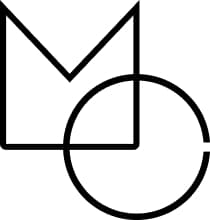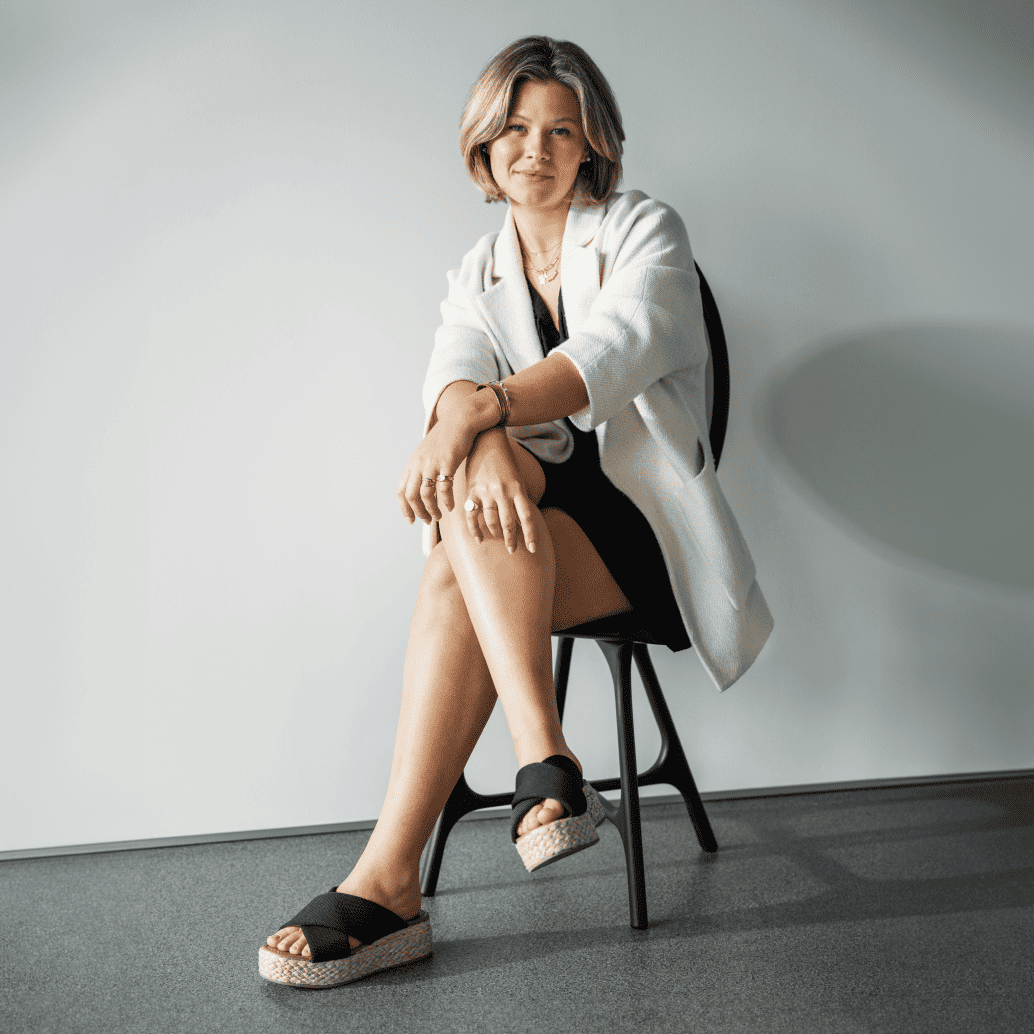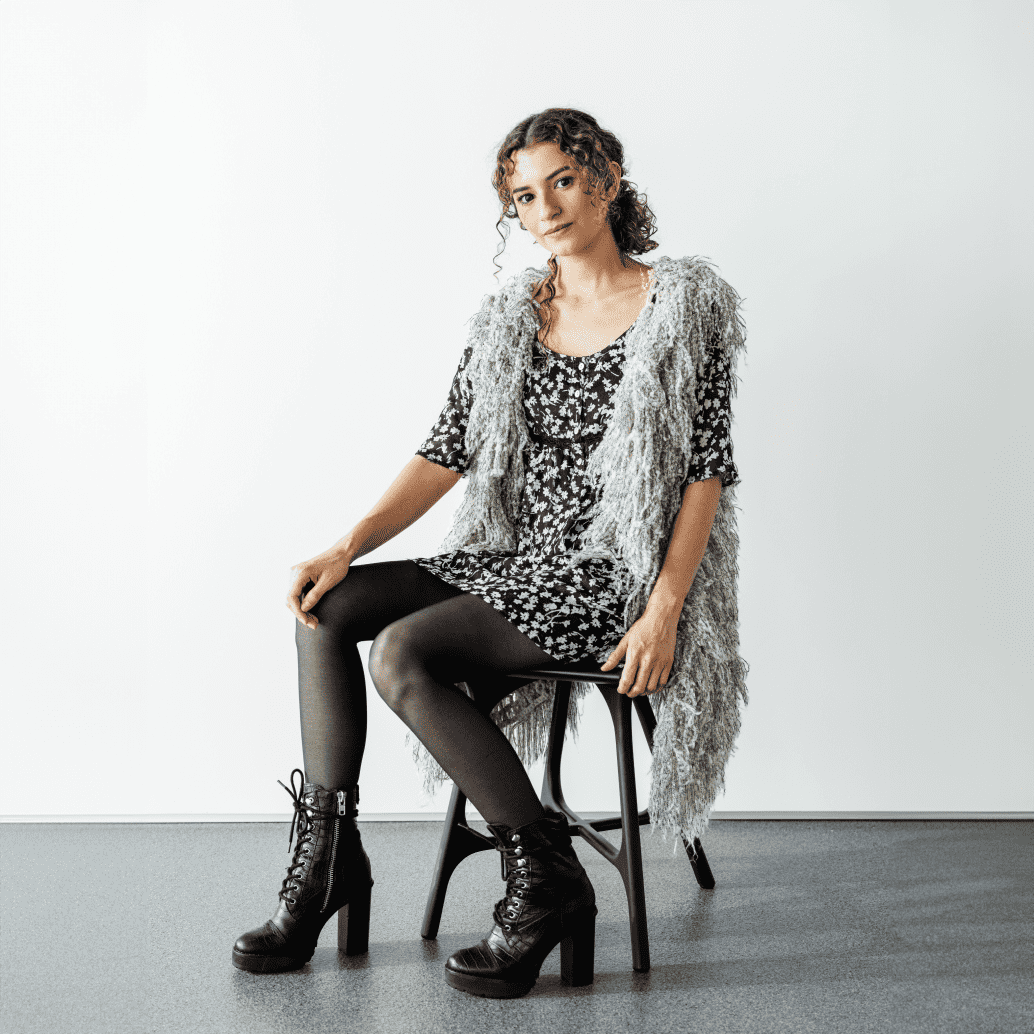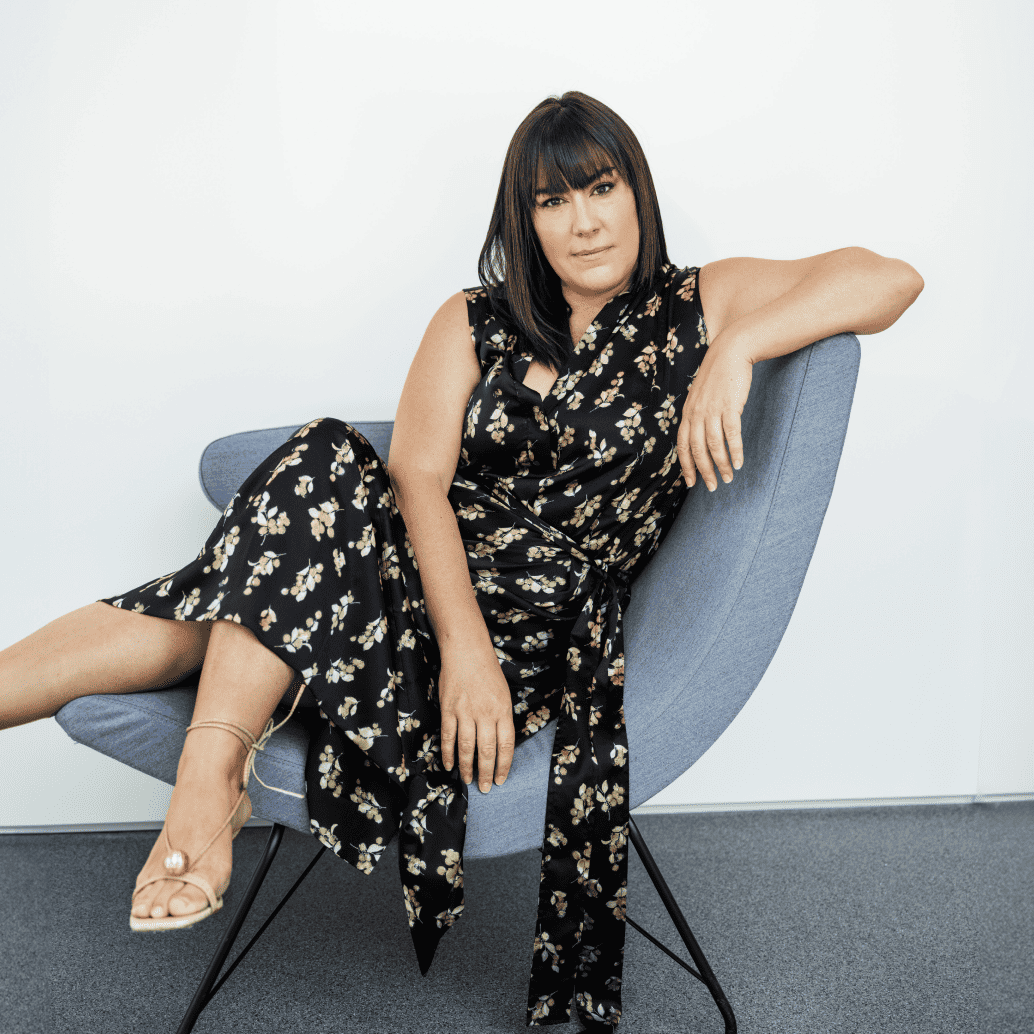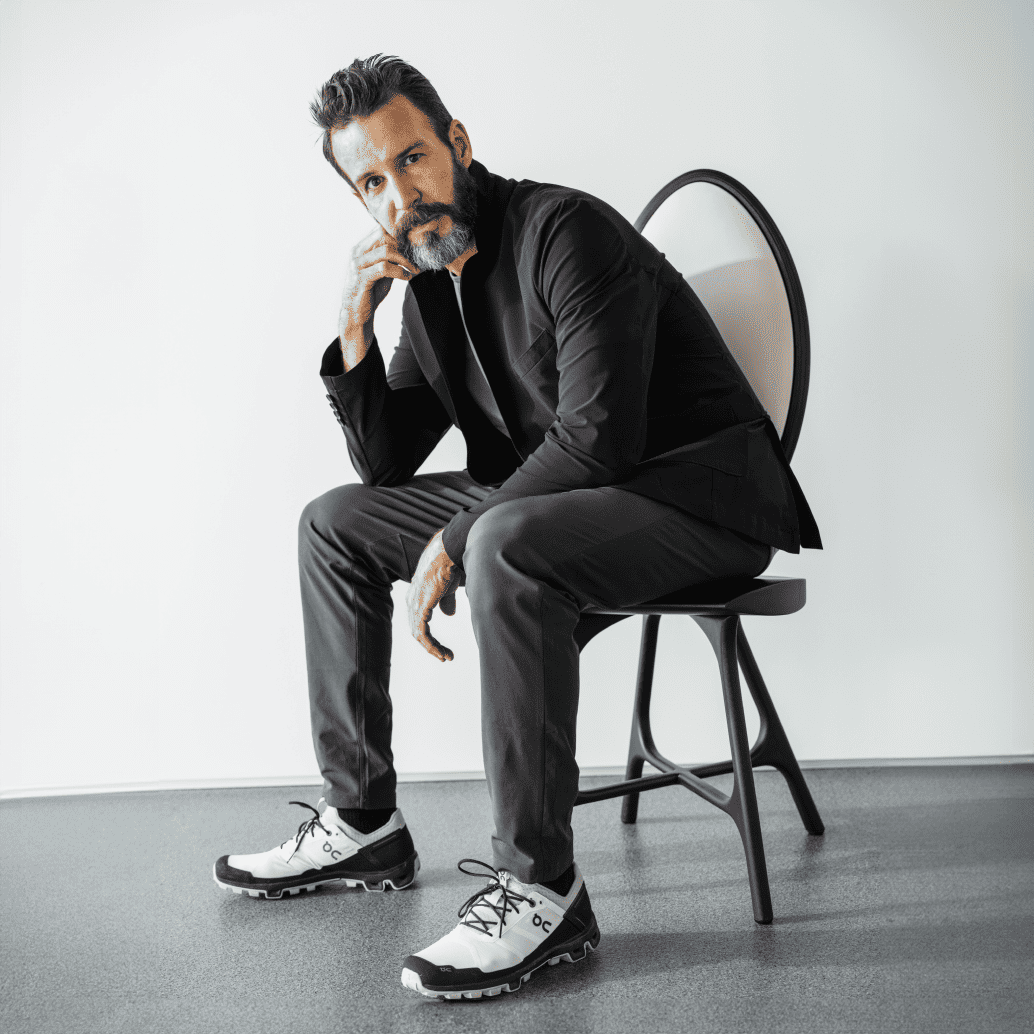Man and woman perch back-to-back, connected at the hip atop the bronze platform. The concrete figures peer in opposite directions, the man crouching, primal, raw and protective next to the female, who stands about 6 feet tall. Her head and shoulders are lifted; she’s alert, listening and ready for anything. In an age when gender binaries are blurred, stereotypical roles are flipped on their heads and unity is paramount, the couple’s balance of power resonates. “I wanted to do something that had a social impact,” Naples sculptor Brett F. Harvey says.
Brett’s latest sculpture, Tempo, Temple, Template, will soon be unveiled at METHOD & CONCEPT’s new ACL | ROW Sculpture Park outside The Collective in Naples. Brett’s brawny sculptures have graced the gallery-meets-design atelier since they began representing him when Brett moved to Naples with his draftswoman wife, Lauren Amalia Redding, in 2018. The piece marks a shift in Brett’s work, which for the past decade, has been dominated by singular figures of pensive men, often honing in on details like a grasping hand or a fragmented torso. Locals may recall his 2021 Lithic, which featured a crouched, chiseled body with hands outstretched and eyes looking back, contemplating the past as it perched at the entrance of METHOD & CONCEPT before the piece sold last year.
Last summer, Brett F. Harvey embarked on the towering, two-figure Tempo, Temple, Template. His loftiest sculpture yet was inspired by his observations of human division amidst political and social issues. “There’s this sort of binary feeling of conflict that we have right now, and I think it’s just totally fabricated—I don’t think it makes any sense,” he says. “I wanted to talk about how great humans can be and how as social beings, we depend on one another, and we need to work together—that’s something I needed to say with more than one solitary figure.” The artwork’s name references Brett’s studies in geology and natural patterns seen over time, culture and space. “The three words—all rooted in ‘temp’ create a pattern in itself,” he says. The idea also mirrors the artist’s methodical and alliterative process.
The Boston-born, NYC-trained artist’s fascination with Old World sculpture started while studying abroad at the Florence School of Fine Arts. At the time, he was enrolled in a program at the New Hampshire Institute of Art, where he earned a bachelor’s in painting. He refined his craft with a focus on sculpture and anatomy at the New York Academy of Art.
Building a piece of this size and complexity is arduous for any artist. For Brett, a do-it-yourself type, with stoic, thoughtful, New Englander sensibility, it means more than eight months spent creating the form multiple times in various mediums, including clay, plaster, rubber and, finally, concrete—carving varying degrees of detail in each phase. When I visit his Naples studio in October, I spot about a half-dozen identical concrete maquettes (essentially, a sculptor’s rough draft) of Tempo, Temple, Template. They stand next to the towering, shattered shell of the plaster mold. “It’s a little more developed than a sketch,” Brett F. Harvey says as he palms the doll-size, muscular figures, where he first worked out the process of sculpting, molding and casting.
Brett’s workshop stands in the back of H&R Studio, the warehouse-turned-studio he shares with Lauren. There, behind a wooden workbench stocked with power tools, two nearly 7-foot-long sheets of paper with sketched outlines of the two figures stretch down the wall. After determining the subjects’ scale on paper, Brett built two wire ‘skeletons’ on top of the outlines, filling them with pieces of foam to form a solid base and shaping them into their final forms. He then dug into 800 pounds of modeling clay to sculpt the full-size model.
This step—about 300 hours spent with spatulas, rakes and handmade looped-wire tools, sculpting every sinewy muscle, gentle wrinkle and protruding bone—is only the beginning of a long, oft frustrating, ultimately satisfying process. With the clay sculpture as a base, he’ll make a plaster mold of the piece and destroy the original creation. Just like that. While many sculptors work directly from concrete, starting with a framework and building the piece around it, Brett likes the malleability he gets with clay. “[With concrete], you only have one shot,” he says. “With clay, I can start with an arm down by the side, and then on a whim, I can decide to put the arm straight up.”
Brett’s not one for taking shortcuts, and he doesn’t outsource any part of the process as sculptors often do. Rather than having a team help make the mold, Brett paints on the layers of plaster himself, working in sections, from toes to torsos to heads, to create the body parts that will later be puzzle-pieced together. He mummifies each segment with strips of burlap to craft a reinforced waste mold. Once the mold is set, he carves more definition from the inside of the plaster. “I’m taking those round forms and pushing them out and giving myself more space,” he says. Working from the inside out gives his sculptures life-like energy, with pulsing veins on hands and feet, flexed hamstrings and calves, and folds between retracted shoulder blades that show through the dimpled concrete skin. To prep for the final mold, Brett applies another layer of plaster into the refined waste mold, then lines that with thick layers of rubber, which serve as the final framework for the concrete.
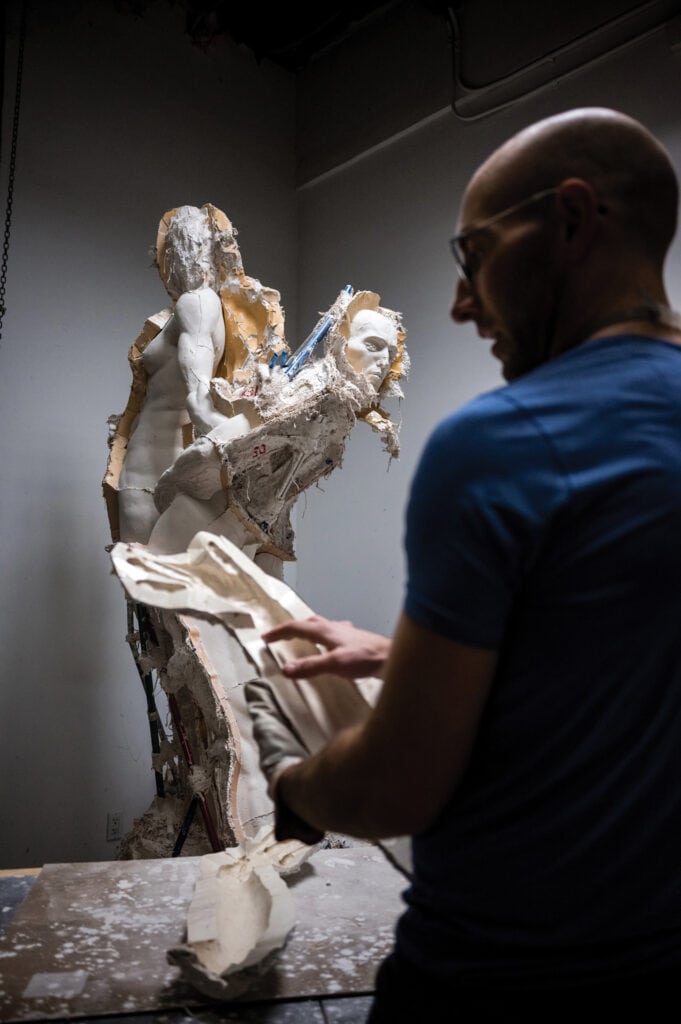
The artist-cum-handyman points to the small concrete mixer he recently invested in. He used to mix the sandy material by hand in a bucket. But the machine allows him to work in bigger batches with high-tech ECC (engineered cementitious composite), a moisture-resistant material used to make bridges in earthquake-prone regions; “It’s essentially the most crack-resistant form of concrete we have access to right now,” Brett says. He scoops the muddy mixture into the molds one body part at a time, pressing the concrete against the frame with his hands and smoothing it into the carved details. The hollowed segments keep the structure relatively light, with roughly 500 pounds of concrete. Each section sits for about a week to dry while he continues with the nearly three dozen parts he’ll later assemble with self-welded “nuts and bolts.”
While 500 pounds is considered light for a large concrete sculpture, it’s a challenging lift for a single person. Brett installed a gantry crane that lifts up to one ton in his workshop to handle the pieces and get to every nook and cranny as he assembles and polishes the final sculpture. Having worked in tiny New York studios in the beginning of his career, the artist is grateful for his spacious workshop in Naples, where he constructs tools for nearly every step of the process, from the hooked wires he uses to sculpt muscles into clay to the vibrating device he crafted to shake concrete into place in solid castings. When the hurricane hit this fall, Brett and his wife, Lauren, opened the studio to family and friends in need of shelter. “I had the canoe up top, in case it flooded,” Brett says, motioning to the boat hung from the ceiling with industrial chains that lower it to the floor.
Brett F. Harvey is now working with METHOD & CONCEPT founder Chad Jensen and his team to install Tempo, Temple, Template in front of the Naples Design District gallery. It’s fitting, as the gallery reopens after Hurricane Ian, that a hometown artist’s work will guard its glass walls. Inside, an exhibit with more of Brett’s work plays off his wife, Lauren Amalia Redding’s delicate silverpoint drawings, assemblage artist Ran Adler’s nature-inspired works and jeweler Cheri Dunnigan’s intricate metal pieces. The unveiling and concurrent show represent Southwest Florida’s tenacity in trying times, as Tempo, Temple, Template’s concrete guardians remind us that, together, we are stronger.

